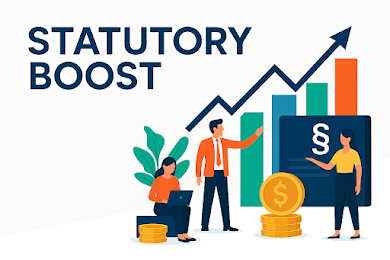The 42nd GST Council met under
the Chairmanship of Union Finance & Corporate Affairs Minister Smt Nirmala
Sitharaman through video conferencing here today. The meeting was also attended
by Union Minister of State for Finance & Corporate Affairs Shri Anurag
Thakur besides Finance Ministers of States & UTs and senior officers of the
Ministry of Finance& States/ UTs
Key Takeaways from the GST Council
Meeting
1.
Hiking the borrowing limit under Option 1:
In its last meeting,
the council gave its member states two borrowing options. The first option
allowed states to borrow the tax collection shortfall on account of GST implementation
estimated at Rs 97,000 crore by issuing debt under a special window coordinated
by the Finance ministry. The second option allowed states to borrow the Rs 2.35
lakh crore shortfall, including the shortfall due to the COVID-19 pandemic, by
issuing market debt.
As many as 21 states
are in favour of the first option. This puts the centre on a stronger footing
in case the issue is out to vote in the GST Council. Under the GST act, only 20
states were needed to pass any resolution during voting.
The GST Council agreed
to hike the borrowing limit under Option 1 to Rs 1.10 lakh cr based on 7%
growth rate, as against Rs 97,000 cr borrowing in Option 1 based on 10% revenue
growth.
It was announced by FM that Rs
24,000 crore of IGST to be released to the states — which had received less
earlier — will be disbursed by the end of next week.
2.
GST Council decides to extend the period of levy of
Compensation cess on sin & luxury goods
It may be noted here
that as per current provisions the cess is to be charged for a period of 5
years till June 2022. It was expected that the cess period will be increased
from 5 years to 7 years. However GST Council decided that extension timeline to
be reviewed and decided from time to time.
In regard to the cess collected
beyond 5 years , first charge will be towards interest on above Rs 1.10 lakh
crore and next 50% towards principal amount of Rs 1.10 lakh crore and left over
towards compensation not being borrowed.
3. Allowing quarterly
filing of GSTR-3B
The 42nd
GST Council Meeting held today has decided to allow the quarterly filing
GSTR-3B returns having turnover of less than ₹ 5 crores.
This facility will be available from
January 1st, 2021. From Jan 2021, the number of returns for
small taxpayers, will be reduced from 24 to 8. However, payment
of tax will be made monthly through challan.
4.
GST exemption on the launch of satellite services
The council has exempted the
launch of satellite services supplied by ISRO, Antrix Corp., and New Space
India Ltd. from the GST. Currently, the supply of satellite launch services
by ISRO, Antrix, or NSIL to a person located in India is taxable at 18 percent.
5.
Refund to be paid/disbursed in a validated bank account
linked with the PAN & Aadhaar of the registrant w.e.f. 01.01.2021.
6.
Amendment to the CGST Rules: Various amendments in
the CGST Rules and FORMS have been recommended which includes provision for furnishing
of Nil FORM CMP-08 through SMS.
7.
Revised HSN/SAC code requirements:
|
Turnover |
HSN code (No. of digits)
required to be shown in invoices |
|
Annual Aggregate Turnover > ₹
5 crores |
6 digits |
|
Annual Aggregate Turnover ≤ ₹ 5
crores |
4 digits |
8.
Steps for Ease of compliance:
a.
Due
date of furnishing quarterly GSTR-1 by quarterly taxpayers to be revised to 13th
of the month succeeding the quarter w.e.f. 1st Jan 2021;
b. Auto-populated GSTR-3B from
GSTR-1s by Auto-populating liability from own GSTR-1 w.e.f. 01.01.2021 and
Auto-populating input tax credit from suppliers’ GSTR-1s w.e.f. 01.01.2021
and for quarterly filers w.e.f. 01.04.2021;
c. FORM GSTR-1 would be mandatorily
required to be filed before FORM GSTR-3B w.e.f. 01.04.2021.
For official press release, click here
Feel free to contact in case of any query or consultation.



0 Comments